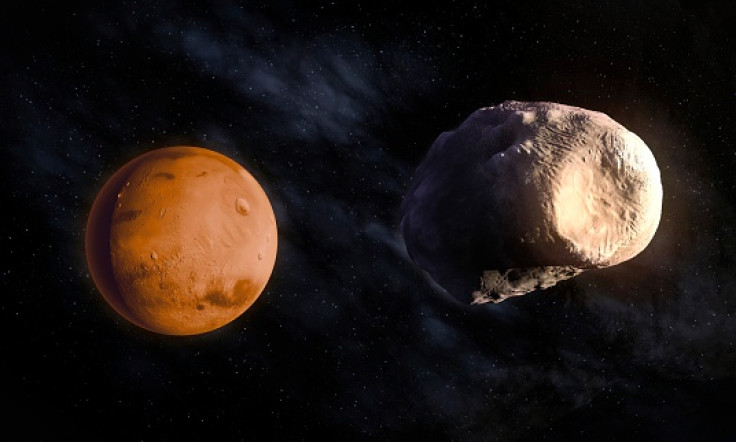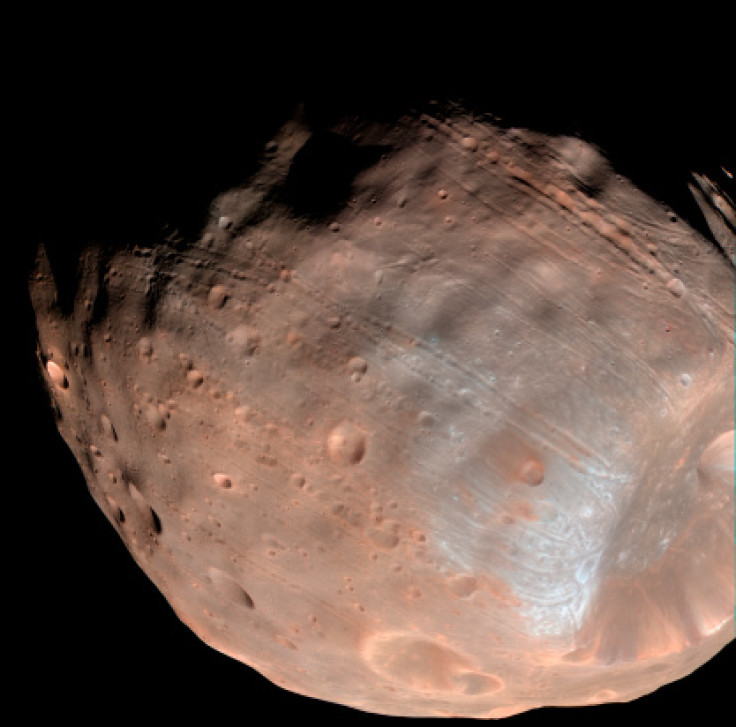Why Martian moon Phobos looks like the Death Star in Star Wars
Scientists have come up with new simulations to explain how the satellite's large Stickney crater was formed.

Mars' largest satellite Phobos looks a bit like the Death Star from the Star Wars movies because of a large crater spanning half of its surface. Now scientists have finally found out how Stickney crater was created.
Phobos is one of the most enigmatic natural satellites in the solar system, puzzling scientists for years as they struggled to understand how a 9 km-wide crater could have formed on the surface of the moon, which is only 22km across, without destroying it.
The latest research, published in Geophysical Research Letters, is based on numerical simulations conducted at Lawrence Livermore National Laboratory (US).
They have allowed physicists to come up with models of asteroid or comet impact that could have created Stickney crater without obliterating Phobos.
"We've demonstrated that you can create this crater without destroying the moon, if you use the proper porosity and resolution in a 3D simulation," said Megan Bruck Syal, one of the authors.
Huge impact object
Previously most simulations of an asteroid impact on Phobos have been done using 2D simulations at lower resolutions, and their quality was not good enough to replicate the large crater successfully. Furthermore, scientists had not taken into account the porosity of Phobos' crust and the fact its density is lower than that of Mars.
The new simulations suggested that there is a range of possible solutions for the size and speed of the object that impacted Phobos – one of the most likely scenario is an impact object 250 metres across travelling close to 6 km/second.

They also reject the theory that the hundreds of parallel grooves that appear to radiate from the crater were caused by the impact. Indeed, the simulations show that fracture patterns in the crust of Phobos would be nothing like the straight, long, parallel grooves that are seen on its surface.
Exercise to save the Earth
Beyond coming up with these interesting findings, the study had another objective: it was a benchmarking exercise for the team to an open source code it has developed. This code is used to simulate various methods of deflecting potentially hazardous Earth-bound asteroids.
"Something as big and fast as what caused the Stickney crater would have a devastating effect on Earth. If Nasa sees a potentially hazardous asteroid coming our way, it will be essential to make sure we're able to deflect it. We'll only have one shot at it, and the consequences couldn't be higher. We do this type of benchmarking research to make sure our codes are right when they will be needed most," Bruck Syal concluded.
© Copyright IBTimes 2024. All rights reserved.






